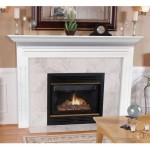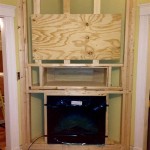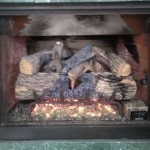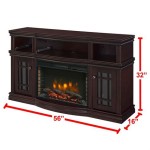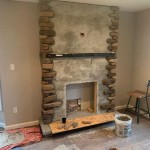Gas Fireplace Insert Installation Cost: A Comprehensive Guide
Transforming your hearth into a cozy and inviting space with a gas fireplace insert is an investment that can redefine the ambiance of your home. However, before you embark on this project, it's crucial to consider the associated costs to ensure it aligns with your budget.
The installation cost of a gas fireplace insert depends on several factors, including the type of insert, the size and complexity of the existing fireplace, and the labor rates in your area. To provide you with a comprehensive understanding, we've outlined these key considerations below:
1. Type of Gas Fireplace Insert
There are three main types of gas fireplace inserts: vented, vent-free, and direct-vent. Vented inserts expel combustion gases through a chimney or flue, vent-free inserts do not require a chimney, and direct-vent inserts draw air for combustion from outside and exhaust fumes through a sealed vent.
Vented inserts typically have lower installation costs than vent-free or direct-vent inserts due to their simpler design and minimal additional venting requirements.
2. Size and Complexity of Existing Fireplace
The size and complexity of your existing fireplace directly influence installation costs. Inserts come in various sizes to accommodate different fireplace openings, and larger inserts naturally require more materials and labor to install.
Additionally, if the existing fireplace has unique architectural features or requires extensive modifications to accommodate the insert, this can add to the overall cost.
3. Labor Rates in Your Area
The cost of installing a gas fireplace insert varies widely depending on the labor rates in your region. Urban areas with high labor costs can significantly increase the installation expenses compared to rural areas.
It's essential to obtain quotes from multiple licensed contractors to ensure you're getting the most competitive pricing for your project.
4. Additional Costs to Consider
Beyond the insert itself and labor costs, there may be additional expenses to factor in:
- Gas line installation if one is not already in place
- Electrical wiring for the insert
- Building permits and inspections (required in most areas)
- Materials for framing, flashing, and sealing
5. Do-It-Yourself vs. Hiring a Contractor
While it's possible to attempt installing a gas fireplace insert as a DIY project, it's strongly advised to hire a licensed and experienced contractor. The complexity of gas lines, electrical connections, and safety codes can pose significant risks if not handled by a professional.
A qualified contractor can provide accurate estimates, ensure the installation is done correctly, and provide peace of mind that your new gas fireplace insert will operate safely and efficiently for years to come.
Conclusion
By considering the factors outlined above, you can prepare for the investment required for your gas fireplace insert installation. Remember to seek quotes from multiple contractors, compare their pricing and experience, and always prioritize safety by leaving the installation to qualified professionals.
With careful planning and execution, a gas fireplace insert can transform your home into a warm, inviting, and elegant haven for years to come.

How Much Does A Gas Fireplace Insert Cost Forbes Home

Estimated Page Fireplaces Stoves Inserts Wood Gas Pellet

Gas Fireplace Cost Guide Unit Add Ons Installation More

How Much Does It Cost To Install A Gas Fireplace Homeserve Usa

Gas Fireplace Installation Cost Dbs Inc

2024 Gas Fireplace Insert Costs

How Much Does It Cost To Put In A Gas Log Fireplace Northern Va Winston S

How Much Does A Fireplace Insert Cost

Estimated Page Fireplaces Stoves Inserts Wood Gas Pellet

Fireplace Installation Cost 2024 Gas Wood Burning Electric



